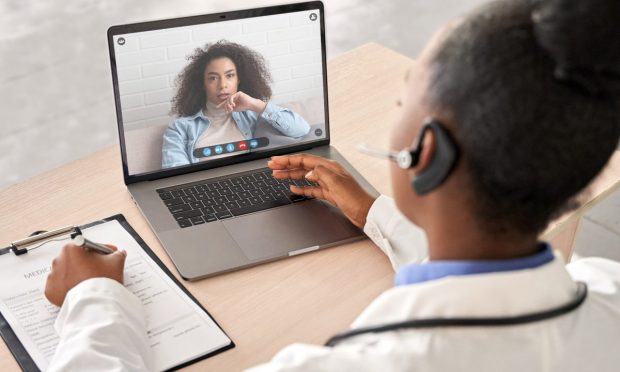From Roblox to RPM, New Reimbursement Rules Spur Telehealth Innovations

As the pandemic goes endemic, telehealth is changing too as providers deal with video visit limitations by adding connected digital devices and heavy up on remote patient monitoring (RPM) and the emerging field of digital therapeutics, focusing on remote intervention.
These are needed next steps to make the telemedicine surge a permanent reality given the time and cost savings it extends to patients and providers, closing telehealth’s own last mile.
Some recent developments show the creative ways video doctor visits can deliver treatment. Among the earliest entrants is Akili Interactive, which in late May announced a partnership with gaming platform Roblox to feature Akili’s EndeavorRx treatment for children with attention deficit and hyperactivity disorder (ADHD).
Approved by the Food and Drug Administration (FDA) in 2021, EndeavorRx is both game and therapy for improving attention spans.
According to a May 26 press release, through the partnership, “Akili and Roblox are introducing new ways for medicine to fit into patients’ lives. Initially, the companies will establish an exclusive Roblox rewards exchange tied to Akili’s EndeavorRx treatment… The companies are exploring additional novel approaches and opportunities to engage Akili patients through Roblox integrations.”
A three-month prescription for EndeavorRx runs $99 or less depending on insurance.
In May, digital therapeutics firm Sidekick Health announced raising $55 million in Series B funding to continue building out its solution that focuses on behavior modification to improve chronic health conditions such as diabetes, ulcerative colitis and Peripheral Artery Disease.
“By harnessing the power of technology we have a unique opportunity to deliver personalized treatments via smartphones and other mobile devices, empowering people to take control of their own health,” Co-Founder Dr. Tryggvi Thorgeirsson said in a press release.
Sidekick Health also announced the “launch of an integrated digital therapeutics solution for improving the outcomes of patients with Atopic Dermatitis (AD) in conjunction with Pfizer,” per a press release, which noted that “one of the challenges of effectively treating AD is that patients’ adherence to treatment tends to be low. Sidekick’s digital therapeutics platform addresses this using gamification principles, behavioral economics and artificial intelligence (AI) to deliver treatment through dynamic care pathways that help inspire lasting behavioral change, positively impacting health outcomes.”
See also: ePayments Ease Healthcare Pains
Paying for “Fundamental” Telehealth
Remote patient monitoring (RPM) is an enabling technology that works with digital therapeutics to track disease states and uses that patient data to fine-tune treatment.
With the current COVID-19 public health emergency scheduled to end in July, advocates of ongoing and increased use of telehealth argue that the technology has proven invaluable after its pandemic performance. The American Medical Association (AMA) is helping lead the effort to have Congress extend telehealth payments and make coverage permanent by 2024.
In a letter to lawmakers earlier this year, the AMA said: “Virtual care is now a fundamental part of the U.S. healthcare system, and it will improve patient access to high-quality care well beyond the COVID-19 pandemic. And while many of the most compelling virtual care clinical use cases are only now emerging, more communities than ever have experienced the powerful impact telehealth has had in bridging gaps in care caused by the crisis-level mental health workforce shortage.”
How patients pay and how physicians and clinicians are reimbursed for telehealth services remains a sticking point as government agencies debate adding it permanently to Medicare Advantage for seniors, while private insurers watch the Centers for Medicare & Medicaid Services (CMS) for clues as to how telehealth will be handled after the emergency ends.
Earlier this year, CMS issued a Telehealth Update Medicare Physician Fee Schedule, stating that “effective on and after the official end of the PHE for COVID-19, you may be able to continue to offer these services as telehealth services. The previous telehealth restrictions limiting telehealth mental health services to only patients residing in rural areas, no longer apply.”
“The patient’s visit ‘originating sites’ of a physician’s office, a hospital or other medical care settings, for telehealth, will also expand to include the patient’s home,” the update added. “In CR 12519, we clarified that the patient’s home includes temporary lodging such as hotels, or homeless shelters, or other temporary lodging that are a short distance from the patient’s actual home, where the ‘originating site facility fee’ doesn’t apply.”
See also: As Telehealth Spike Slows, Providers Seek Innovation to Increase Engagement and New Use Cases
Removing restrictions around originating sites of telehealth visits for billing purposes means more Medicare patients can continue to have telehealth visits covered. As RPM devices and digital therapeutics advance, the expectation is that telehealth will be able to actually intervene rather than simply monitor and diagnose.
Folding telehealth costs into coverage will go a long way to improving and scaling the modality.
According to “The Telehealth Digital Payments Report,” a collaboration between PYMNTS American Express, “costs continued to pose a barrier to consumers’ telehealth access during the past 12 months. One-third of consumers reported opting out of necessary appointments or abandoning needed medical treatment, predominantly for cost-related reasons: 43% of those who opted out of visits were concerned about the cost, 40% said they could not afford the care or treatment and 26% said their insurance would not cover the visit.”
Get the report: The Telehealth Digital Payments Report
